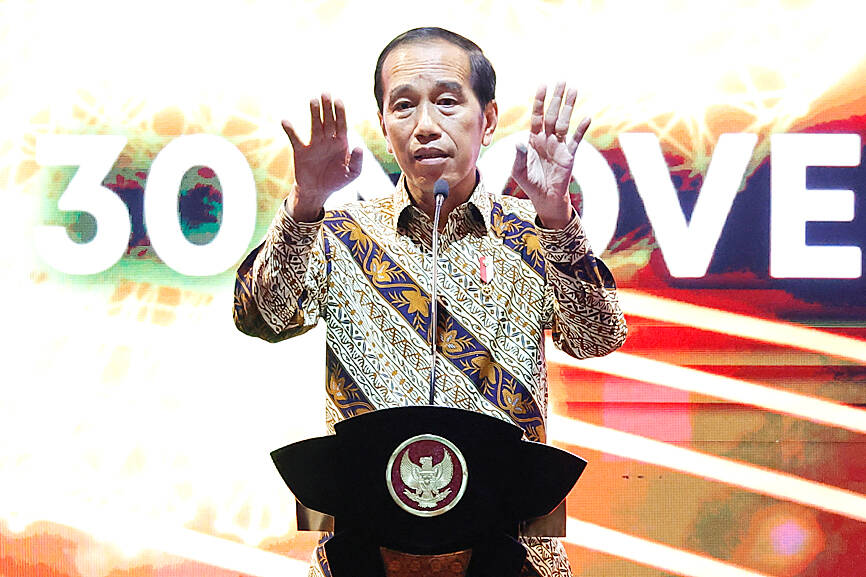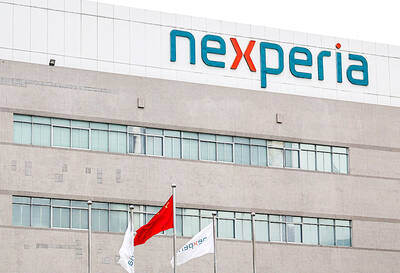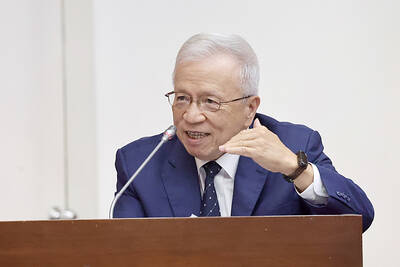Indonesia is to ban bauxite exports from the middle of next year, its latest move aimed at boosting domestic processing of its mineral resources.
Bauxite is an ore used to make aluminum. Indonesia is the world’s sixth-largest producer and holds the fifth-biggest reserves, a US Geological Survey report said. Exports of bleached bauxite are also to be banned.
“Starting from June 2023, the government will impose a ban on exports of bauxite ore and push for development of processed bauxite in the country,” Indonesian President Joko Widodo said in a briefing broadcast on YouTube.

Photo: Reuters
This means the “added value is enjoyed in the country for the progress and welfare of the people,” he said.
Southeast Asia’s largest economy has been pursuing policies designed to create jobs and revenue by processing more of its natural resources at home, rather than just shipping out raw materials.
Jokowi, as the president is known, said this month that Jakarta would not follow a purely open economic model that he blamed for undercutting Latin America’s growth prospects for decades.
Yesterday, he also flagged that there are potentially more prohibitions on raw material shipments coming next year.
Aluminum rose 0.7 percent to US$2,390 a tonne on the London Metal Exchange as of 2:50pm in Singapore yesterday. The metal is used in everything from beverage cans to aircraft and refrigerators.
The Indonesian government has also previously flagged a possible ban on copper concentrate exports, which could hit a global market facing a large shortfall in supply as the energy transition gathers pace.
Indonesia wrested control of Grasberg, the second-biggest copper mine in the world, from international mining firms, including Freeport-McMoRan Inc, in 2018.
Indonesia has halted bauxite exports before. A ban in 2014 hit China’s aluminum industry hard, as it relied on the Southeast Asian nation for about two-thirds of its overseas supply at the time.
Chinese smelters responded by investing heavily in diversifying their sources of the mineral, particularly from Guinea.
Jakarta has already prohibited nickel ore exports. That has spurred Chinese companies to invest billions of dollars to set up operations on the islands of Sulawesi and Halmahera, where they have built refineries, smelters and a metallurgy school. The value of the country’s nickel exports has since surged.
Still, the move has triggered opposition from importing nations. Following a complaint by the EU, the WTO last month ruled that Indonesia’s ban on nickel ore exports contravened international trade rules. Jakarta is appealing the decision.
The bauxite ban “is unlikely to have any material impact” on the market, as Indonesia produced less than 5 percent of global supplies of the mineral last year, said Jayanta Roy, senior vice president at ICRA Ltd, the Indian unit of Moody’s Investors Service.
“This deficit can potentially be bridged by other large producers like Australia and Guinea,” he said.
The unfavorable global demand outlook for non-ferrous metals would also limit the impact of Indonesia’s move, Roy said.

JITTERS: Nexperia has a 20 percent market share for chips powering simpler features such as window controls, and changing supply chains could take years European carmakers are looking into ways to scratch components made with parts from China, spooked by deepening geopolitical spats playing out through chipmaker Nexperia BV and Beijing’s export controls on rare earths. To protect operations from trade ructions, several automakers are pushing major suppliers to find permanent alternatives to Chinese semiconductors, people familiar with the matter said. The industry is considering broader changes to its supply chain to adapt to shifting geopolitics, Europe’s main suppliers lobby CLEPA head Matthias Zink said. “We had some indications already — questions like: ‘How can you supply me without this dependency on China?’” Zink, who also

At least US$50 million for the freedom of an Emirati sheikh: That is the king’s ransom paid two weeks ago to militants linked to al-Qaeda who are pushing to topple the Malian government and impose Islamic law. Alongside a crippling fuel blockade, the Group for the Support of Islam and Muslims (JNIM) has made kidnapping wealthy foreigners for a ransom a pillar of its strategy of “economic jihad.” Its goal: Oust the junta, which has struggled to contain Mali’s decade-long insurgency since taking power following back-to-back coups in 2020 and 2021, by scaring away investors and paralyzing the west African country’s economy.

BUST FEARS: While a KMT legislator asked if an AI bubble could affect Taiwan, the DGBAS minister said the sector appears on track to continue growing The local property market has cooled down moderately following a series of credit control measures designed to contain speculation, the central bank said yesterday, while remaining tight-lipped about potential rule relaxations. Lawmakers in a meeting of the legislature’s Finance Committee voiced concerns to central bank officials that the credit control measures have adversely affected the government’s tax income and small and medium-sized property developers, with limited positive effects. Housing prices have been climbing since 2016, even when the central bank imposed its first set of control measures in 2020, Chinese Nationalist Party (KMT) Legislator Lo Ting-wei (羅廷瑋) said. “Since the second half of

AI BOOST: Next year, the cloud and networking product business is expected to remain a key revenue pillar for the company, Hon Hai chairman Young Liu said Manufacturing giant Hon Hai Precision Industry Co (鴻海精密) yesterday posted its best third-quarter profit in the company’s history, backed by strong demand for artificial intelligence (AI) servers. Net profit expanded 17 percent annually to NT$57.67 billion (US$1.86 billion) from NT$44.36 billion, the company said. On a quarterly basis, net profit soared 30 percent from NT$44.36 billion, it said. Hon Hai, which is Apple Inc’s primary iPhone assembler and makes servers powered by Nvidia Corp’s AI accelerators, said earnings per share expanded to NT$4.15 from NT$3.55 a year earlier and NT$3.19 in the second quarter. Gross margin improved to 6.35 percent,